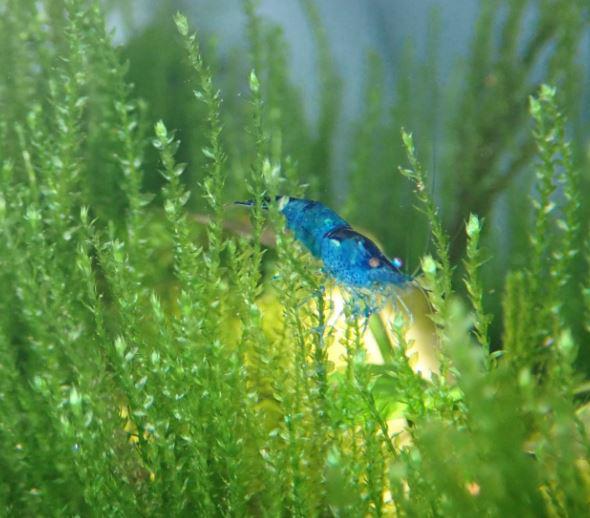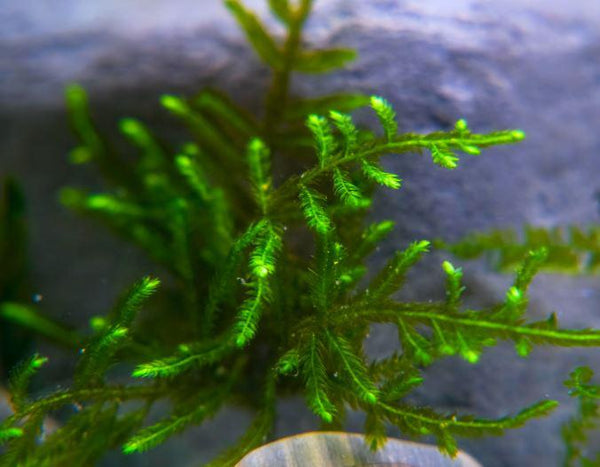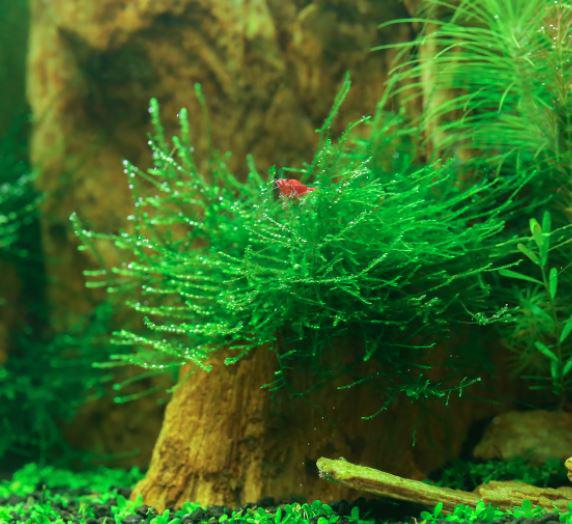Christmas Moss vs Java Moss

It feels like every other aquatic article and Youtube video talks about Java moss as the plant solution to everything: Bad water quality, diggy/nippy fish like Corydoras and Goldfish, slightly brackish tanks, and aquariums with really poor lighting.
All of those things are totally correct!
You might also have seen the appropriately named 'Christmas' Moss listed for sale as well.
It's less common, but seems pretty much interchangeable with Java moss.
So really, what's the difference?
Long story short; not much.

What's in common?
Java moss (Vesicularia dubyana) and Christmas moss (Vesicularia montagnei) are both popular aquatic plants that are well-suited to a wide range of aquarium environments.
- Both Java and Christmas mosses do not need to be planted, nor do they need to be fertilized or have any special care taken at all. You can literally toss both in a bucket, and they'll grow in ambient room light. This makes them both absolutely perfect for beginners!
- Both plants are hardy and low-maintenance, and are known for their ability to provide a natural-looking habitat for fish and shrimp.
- They are also ideal for breeding!
However, there are some key differences between these two plants that may make one more suitable for your aquarium than the other.
The differences:
In terms of texture and color for instance, Java moss and Christmas moss can look quite similar depending on how they're grown.
Generally, Java moss has a soft, velvety texture and a bright green color, while Christmas moss has a rough, wavy texture and a dark green color.

Java Moss:
Java moss is a small, delicate plant that is native to Southeast Asia. It has tiny, pointed leaves that grow on long tendrils in a dense, tangled mass. Read more on growing Java moss here.
- Java moss has a softer, thinner texture and a bright green color. It is a popular plant for aquascaping, and is often used as a foreground or free-floating plant in aquariums.
It can be attached to driftwood, rocks, or other aquarium decorations using fishing line or sewing thread. My personal preference is clear sewing thread. It comes in a 200 yard spool for about $5. You can grab it at Walmart, Amazon, and the like.
Here's what healthy, fully submerged, lower light Java moss looks like in general:

Christmas moss:
Now, while also native to southeast Asia, Christmas moss, is a larger, more robust plant.
It has thicker (but still tiny) leaves that grow layered on compound tendrils, in a cascading pattern.
- Christmas moss has a rough, wavy texture and a dark green color that resembles a pine tree pattern from afar.
Hence the name!

Using them in your aquariums:
Like Java moss, Christmas moss is also a popular plant for aquascaping, and is often used as a background or free-floating feature.

It can also be attached to driftwood, rocks, or other aquarium decorations using fishing line or sewing thread.
I have seen some very cool iterations of this on bonsai driftwood too!


Can you tell which of those bonsais are Christmas, and which is Java moss?
By the way, check out this blog post if you're looking for more inspiration on creating aquascapes with Bonsai driftwood.
Variations:
This all could be completely different, however, if these mosses are grown immersed vs submerged, and under high or low lighting.
Immersed grown moss will look much more rough, and will look more reddish brown as it has grown the structures to cope with more co2 exposure and less humidity.
Here's what that looks like in Java moss:

And here's what co2 grown, submerged Java moss looks like:

See the pearling on this Java moss (above)? This tank has Co2 and medium to high lights. You can see that bright green, elongated, and straight growth there.

In this tank with Christmas moss (above), you can see that submerged, feathery pine tree shaped texture. This tank had irregular co2 and inappropriately high lights, so while the moss was growing well, so was the algae.
Neither Christmas moss or Java moss needs a whole lot of light. Don't feed your algae!
TL;DR:
- Both Christmas moss and Java moss are low-maintenance plants that are easy to care for.
- They neither need to be planted in the substrate, nor do they need special lights or fertilizing.
- They can thrive in a wide variety of aquarium conditions and are resistant to most common aquarium diseases.
Both species are also good choices for beginners, as they are crazy easy to propagate and can be grown in a variety of settings.
Good Luck!
Happy Plantin'!
- Cassandra
SUBSCRIBE FOR SALES,STOCK ANNOUNCEMENTS AND LATEST BLOG... DIRECTLY TO YOUR EMAIL!
- Choosing a selection results in a full page refresh.
- Press the space key then arrow keys to make a selection.
